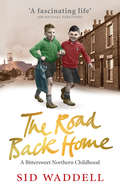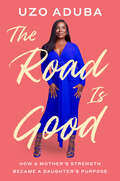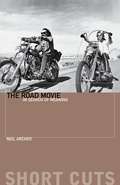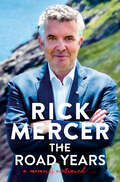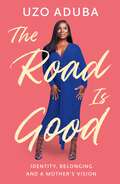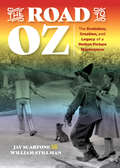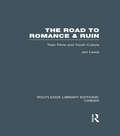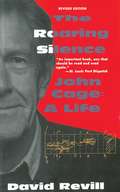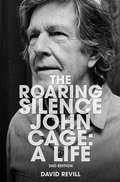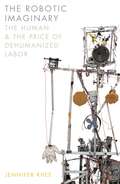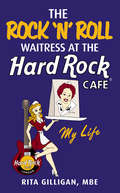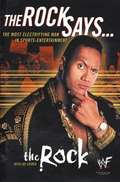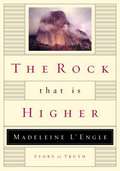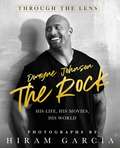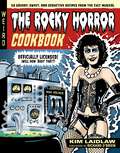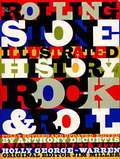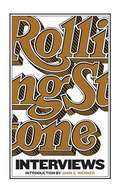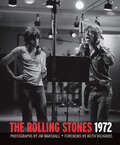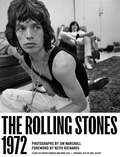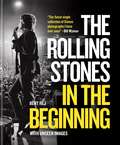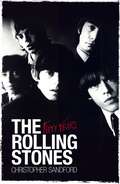- Table View
- List View
The Road Back Home: A Northern Childhood
by Sid Waddell'I had not lived in the former pit village of Lynemouth since 1961 but the winding road north from Newcastle will always be the same nostalgic highway, each twist charged with vivid memories and powerful emotions...'So begins a story full of wonderful humour, emotional candour and hardy tales of tough times - a quietly epic family saga set amid the pit villages of the North East . It stretches from the 1920s, before Sid's parents had even met, to the final closing of the mine and his mother's death in 1999.Sid paints a picture of a colourful, tight knit community full of good times and hard work, god-fearing women and hard-drinking men. Always dominating the skyline is Auld Betty, the pit head that took the men away each day and, with a prayer, brought them back each evening. Amongst the unforgettable cast of his extended family and friends, we follow the Waddells' attempts to stay afloat and provide a better future and possible escape for youngsters like Sid.
The Road Is Good: How a Mother's Strength Became a Daughter's Purpose
by Uzo AdubaA powerful, timely memoir of Black immigrant identity, the story of an unforgettable matriarch, and a unique coming-of-age story by Nigerian American actress Uzo Aduba.The actress Uzo Aduba came of age grappling with a master juggling act: as one of few Black families in their white Massachusetts suburb, she and her siblings were the unexpected presence in whatever school room or sports team they joined. But Aduba was also rooted by a fierce and nonnegotiable sense of belonging and extraordinary worth that stemmed from her mother&’s powerful vision for her children, and their connection to generations of family in Nigeria. The alchemy of being out of place yet driven by fearless conviction powered Aduba to success. The Road Is Good is more than the journey of a young woman determined to survive young adulthood — and to create a workable identity for herself. It is the story of an incredible mother and a testament to matriarchal power. When Aduba&’s mother falls ill, the origin of her own power crystallizes and Aduba leaps into a caretaker role, uniquely prepared by the history and tools her mother passed along to become steward of her ancestoral legacy. Deeply mining her family history—gripping anecdotes her mother, aunts, and uncles shared in passing at family celebrations and her own discoveries through countless auditions in New York and her travels to Nigeria—Aduba pieces together a life story imbued with guiding lessons that are both personal and profoundly universal.
The Road Movie: In Search of Meaning (Short Cuts)
by Neil ArcherThough often seen as one of America's native cinematic genres, the road movie has lent itself to diverse international contexts and inspired a host of filmmakers. As analyzed in this study, from its most familiar origins in Hollywood the road movie has become a global film practice, whether as a vehicle for exploring the relationship between various national contexts and American cinema, as a means of narrating different national and continental histories, or as a form of individual filmmaking expression. Beginning with key films from Depression-era Hollywood and the New Hollywood of the late 1960s and then considering its wider effect on world cinemas, this volume maps the development and adaptability of an enduring genre, studying iconic films along the way.
The Road Years: A Memoir, Continued . . .
by Rick MercerRick Mercer is back—again!—with the eagerly awaited sequel to his bestselling memoirAt the end of his memoir Talking to Canadians, Rick Mercer was poised to make the biggest leap yet in his extraordinary career. Having overcome a serious lack of promise as a schoolboy and risen through the showbiz ranks—as an aspiring actor, star of a surprisingly successful one-man show about the Meech Lake Accord, co-founder of This Hour Has 22 Minutes, creator and star of the dark-comedy sitcom Made in Canada—he was about to tackle his biggest opportunity yet. The Road Years picks up the story at that exciting point, with the greenlighting of what would become Rick Mercer Report. Plans for the show, of course, included political satire and Rick&’s patented rants. But Rick and his partner, Gerald Lunz, were also determined to do something that comedy tends to avoid as too challenging: they would emphasize the positive. Rick would travel from coast to coast to coast in search of everything that&’s best about Canada, especially its people. He found a lot to celebrate, naturally, and was rewarded with a huge audience and a run of 15 seasons. The Road Years tells the inside story of that stupendous success. A time when Rick was heading to another town—or military base, sports centre, national park—to try dogsledding, chainsaw carving, and bear tagging; hang from a harness (a lot); ride the &“Train of Death;&” plus countless other joyous and/or reckless assignments. Added to the mix were encounters with the country&’s great. Every living prime minister. Rock and roll royalty from Rush to Randy Bachman. Olympians and Paralympians. A skinny-dipping Bob Rae. And Jann Arden, of course, who gets a chapter to herself. Along the way he even found the time to visit several countries in Africa and co-found and champion the charity Spread the Net, which has gone on to protect the lives of millions. Join the celebration, and revive a wealth of happy memories, with what is Rick Mercer&’s funniest, most fascinating book yet.
The Road is Good: The powerful and inspiring memoir from the Orange Is The New Black star
by Uzo AdubaA powerful, timely memoir of Black immigrant identity, maternal love, and a unique coming-of-age story by Emmy-winning Orange Is the New Black star Uzo Aduba. Actress Uzo Aduba - known for Emmy-winning roles in Orange Is the New Black and Mrs. America - grew up in one of the few Black families in a white Massachusetts suburb. But she and her siblings were also grounded by a fierce sense of belonging and worth that stemmed from their mother's powerful vision for her children, and by their connection to generations of family in Nigeria. The alchemy of being out of place yet driven by fearless conviction powered Uzo to success - and fuels her intimate and inspiring memoir.Deeply mining her family history and the gripping tales handed down to her by her mother, aunts and uncles, Uzo weaves together a moving story filled with guiding lessons that are both personal and profoundly universal. Framed by two powerful turning points - Uzo's mother's illness and her eventual death - The Road Is Good is both a story of a young woman determined to survive early adulthood and create an identity for herself, and a testament to matriarchal power and the guiding light of maternal love.
The Road to Oz: The Evolution, Creation, and Legacy of a Motion Picture Masterpiece
by William Stillman Jay ScarfoneThe Road to Oz is a complete retelling of how The Wizard of Oz was influenced and created, and attained its iconic status. The new volume by Jay Scarfone and William Stillman will reflect recent research and much more through newly discovered period interviews, media resources of the era, transcriptions and unique contemporary interviews with those who were there. Additionally, never-before-published imagery accompanies the text. In its truth and candor, this new historical contribution is ideal to tie-in with the 2018-19 80th anniversary of the 1939 movie.Tantalizing highlights of the text include:· A thorough synopsis of L. Frank Baum&’s The Wonderful Wizard of Oz (1900) and the script, inspired by the book, of the 1903 Broadway musical-comedy extravaganza.· An overview of the plots of prior silent film adaptations of Oz and how they influenced the M-G-M film.· An analysis of newly-discovered audio transcriptions of Wizard of Oz radio programs from 1931-32 and 1937-38—all of which were previously unknown.· A complete accounting of Sam Goldwyn&’s proposed (and aborted) 1934 Technicolor musical version of Oz starring Eddie Cantor (including commentary from Cantor&’s sole surviving child).· A thorough analysis of the October 10, 1938 M-G-M shooting script (provided by descendants of comedian and Cowardly Lion actor Bert Lahr) that predates the beginning of production by seventy-two hours.· Startling revelations about the operetta that seemingly inspired &“Over the Rainbow.&”· Judy Garland&’s trials and tribulations with the studio, including the threat that M-G-M was grooming a sound-alike who tested for Oz.· The supporting player who was cast in two roles in Oz&’s fantasy sequence—the second role revealed for the first time in Scarfone and Stillman&’s text.· The Munchkin midgets&’ pre-1939 Wizard of Oz connection.· Oz&’s film editor with a direct connection to Walt Disney and Snow White.· Studio nepotism, favoritism and politics at the height of Hollywood&’s golden age on the making of the world&’s most famous film.&“The Road to Oz not only delivers exciting, previously unpublished information and insight, but does so in an extremely well-cited format. This is absolutely a must-have for any Oz fan or film historian.&” —Sean Barrett, theatrical/film producer and artistic director, Land of Oz, North Carolina &“A new and wonderful book penned by the foremost Oz movie history authors. This is a must-read for all old and new Oz fans worldwide.&” —Roger S. Baum, author of Dorothy of Oz (on which the film Legends of Oz: Dorothy&’s Return is based) and great-grandson of L. Frank Baum&“Numerous books have celebrated the fan appeal of MGM&’s Wizard of Oz, but there&’s far more to this story than nostalgia. Scarfone and Stillman delve deep into the history of this landmark film, exploring its place in the pantheon of classic fantasy films, as well as fascinating details of production. The Road to Oz is an important addition to the film-history bookshelf.&” —J.B. Kaufman, film historian and author of The Fairest One of All: The Making of Walt Disney&’s Snow White and the Seven Dwarfs&“The Road to Oz is a gamechanger in the world of motion picture history books. Long considered the leading authorities on the making of The Wizard of Oz, Scarfone and Stillman have crafted decades of extensive research into a new and unparalleled historical recalling of the classic film.&” —Randy L. Schmidt, editor of Judy Garland on Judy Garland: Interviews and Encounters and author of Little Girl Blue: The Life of Karen Carpenter
The Road to Romance and Ruin: Teen Films and Youth Culture (Routledge Library Editions: Cinema)
by Jon LewisThis book analyses the teen film as the rare medium able to represent the otherwise chaotic and conflicting experience of youth. The author focuses on six major issues: alienation, deviance and delinquency, sex and gender, the politics of consumption, the apolitics of youth(ful) rebellion, and regression into nostalgia. Despite the many differences within the genre, this book sees all teen films as focused on a single social concern: the breakdown of traditional forms of authority – school, church, family. Working with the theories of such diverse scholars as Kenneth Keniston, Bruno Bettelheim, Erik Erikson, Theodor Adorno, Simon Frith, and Dick Hebdige, the author draws an innovative and flexible model of a cultural history of youth. Originally published in 1992.
The Road to Roses: Heartbreak, Hope, and Finding Strength When Life Doesn't Go as Planned
by Desiree Hartsock SiegfriedWhen Desiree Hartsock was offered the opportunity to star on The Bachelorette, she thought she was finally getting the life she always longed for. Yet her reality TV dreams gave way to rough roads of unexpected twists, public scrutiny, and rejection. Now for the first time, Desiree reveals in this rivetingly honest book how she found her resilience and love after all--and you can too. Desiree Hartsock was living paycheck to paycheck and freshly--not to mention painfully--single when she first stepped onto the set of The Bachelor. Then when she was selected to star as The Bachelorette, she thought surely this turn of events promised a second chance. Yet Desiree's debut on the world stage also meant facing the critics, as viewers judged her every word and action. She was devastated when Brooks broke up with her and the entire world observed her humiliation. But what the world didn't see was the comeback journey that followed. The Road to Roses reveals: The emotional journey behind the events that played out on cameraThe mindset changes that kept Desiree open to love and trust even after heartbreak, that ultimately led her to choosing her husbandAnd the off-camera journey of the lessons Desiree learned, like how to always fail forward, stay true to yourself, and trusting that despite the external pressures, God loves us just as we areFor anyone who is looking at the pieces of their lives and losing hope that they can be put back together again, The Road to Roses offers an authentic guide for finding your grit to keep going and make yourself proud no matter what pressures you face. Whether your heart has been broken, your dream has been put on hold, or your character is being put under pressure, following Desiree's journey will give you courage to stay strong in your own.
The Road to You (Wildflower #2)
by Alecia WhitakerBright lights...screaming fans...cute roadies...country music sensation Bird Barrett has officially arrived.Next up on the road to stardom, Bird's heading out on tour. Between opening for one of the biggest acts in country music and meeting a passionate young photographer who's working as part of the backstage crew, the weeks pass by in an exciting blur. It might even be enough to distract Bird from the way things ended--or never quite started--with Adam Dean.When the tour wraps, though, it's back to reality. The label is eager for a new hit song, but the sudden fame, complete with a media-fueled rivalry with another country music starlet, has Bird questioning her priorities. Before she can pour her heart into her music, she'll need to figure out where it truly lies. Filled with sweet country music spirit, Wildflower is a series you just can't get out of your head.
The Roaring Silence: A Life
by David RevillComposer John Cage is often described as the most influential musician of the last half-century. He has defined - and continues to define - our whole concept of "avant-garde", not just in music but increasingly as writer and visual artist. "The Roaring Silence" is the first full-length biography of Cage. It documents his life in unrivalled detail, interweaving a close account of the evolution of his work with an exploration of his aesthetic, political and philosophical ideas. David Revil maintains that Cage's extraordinary productivity and versatility are best understood in the light of his inner development. His life, work and ideas have clarified, refined and reinforced one another, and thereby Cage has made himself what he is. While never assuming specialist knowledge, this book discusses all of Cage's works in depth and sets them in the context of his compositional, theoretical and personal development. Also included are the most comprehensive worklist, discography and bibliography available to date, as well as many previously unpublished photographs. The author draws judiciously on extensive library and archive material, and on exclusive interviews and conversations with Cage and many of his friends and associates. The result is a true-to-life and true-to-form appreciation of a genuine original, of interest not only to the serious researcher and the musician but to everyone interested in the cultural influences that have shaped, and are shaping 20th century thought.
The Roaring Silence: John Cage: A Life
by David RevillJohn Cage has been described as the most important composer of our time. He combined classical European training with Eastern spirituality to produce an American amalgam of such vitality and originality that it continues to define what we mean by avant-garde. His influence has touched generations of artists, including Philip Glass, David Byrne, and his longtime collaborator Merce Cunningham. His work and ideas have influenced not only the world of music but also dance, painting, printmaking, video art, and poetry.The Roaring Silence documents his life in unrivaled detail, interweaving a close account of the evolution of his work with an exploration of his aesthetic and philosophical ideas, while placing these in the greater perspective of American life and letters. Paying due attention to Cage's inventions, such as the prepared piano, and his pioneering use of indeterminate notation and chance operations in composition (utilizing the I Ching), David Revill also illuminates Cage the performer, printmaker, watercolorist, expert amateur mycologist, game show celebrity, political anarchist, and social activist.Arnold Schoenberg once called Cage "not a composer, but an inventor--of genius." This revised edition presents never-before-seen correspondence between Cage and other luminaries of his day, as well as new analysis into his legacy. The Roaring Silence celebrates the life and work of this true American original.
The Robotic Imaginary: The Human and the Price of Dehumanized Labor
by Jennifer RheeTracing the connections between human-like robots and AI at the site of dehumanization and exploited labor The word robot—introduced in Karel Čapek&’s 1920 play R.U.R.—derives from rabota, the Czech word for servitude or forced labor. A century later, the play&’s dystopian themes of dehumanization and exploited labor are being played out in factories, workplaces, and battlefields. In The Robotic Imaginary, Jennifer Rhee traces the provocative and productive connections of contemporary robots in technology, film, art, and literature. Centered around the twinned processes of anthropomorphization and dehumanization, she analyzes the coevolution of cultural and technological robots and artificial intelligence, arguing that it is through the conceptualization of the human and, more important, the dehumanized that these multiple spheres affect and transform each other.Drawing on the writings of Alan Turing, Sara Ahmed, and Arlie Russell Hochschild; such films and novels as Her and The Stepford Wives; technologies like Kismet (the pioneering &“emotional robot&”); and contemporary drone art, this book explores anthropomorphic paradigms in robot design and imagery in ways that often challenge the very grounds on which those paradigms operate in robotics labs and industry. From disembodied, conversational AI and its entanglement with care labor; embodied mobile robots as they intersect with domestic labor; emotional robots impacting affective labor; and armed military drones and artistic responses to drone warfare, The Robotic Imaginary ultimately reveals how the human is made knowable through the design of and discourse on humanoid robots that are, paradoxically, dehumanized.
The Rock 'N’ Roll Waitress at the Hard Rock Cafe
by Rita GilliganMeet Rita Gilligan, Hard Rock Cafe’s original ‘Rock ‘n’ Roll’ waitress and international cultural ambassador and MBE. It was 1971 when Hard Rock first opened its doors in London, and Rita was there with her spunky, chatty, and absolutely lovable personality. Over the forty-five years she served at Hard Rock, Rita has collected quite some stories to tell, including her relationship with rock ‘n’ roll celebrities, Hard Rock’s history, and her own personal life struggles. In this book Rita tells her story from being a shy Catholic schoolgirl in Galway to becoming the best known waitress and later ambassador of one of history's most iconic American style restaurants. She also narrates how she met Paul McCartney, Eric Clapton, The Rolling Stones, Bruce Springsteen and many other famous celebrities during her time at the Hard Rock. Written with candid humour and disarming honesty, Rita serves up a brilliantly crafted story about how the Hard Rock, like herself, defied all the odds to become a global phenomenon.
The Rock Says: The Most Electrifying Man in Sports Entertainment
by Joe Layden Dwayne JohnsonThe autobiography of Dwayne Johnson, the professional wrestler known as "The Rock."
The Rock That Is Higher: Story As Truth
by Madeleine L'Engle"We are all strangers in a strange land, longing for home, but not quite knowing what or where home is. We glimpse it sometimes in our dreams, or as we turn a corner, and suddenly there is a strange, sweet familiarity that vanishes almost as soon as it comes Madeleine L Engle, from "The Rock That Is Higher Story captures our hearts and feeds our imaginations. It reminds us who we are and where we came from. Story gives meaning and direction to our lives as we learn to see it as an affirmation of God s love and truth an acknowledgment of our longing for a rock in the midst of life s wilderness. Drawing upon her own experiences, well-known tales in literature, and selected narratives from Scripture, Madeleine L Engle gently leads the way into the glorious world of story in "The Rock That Is Higher. " Here she acknowledges universal human longings and considers how literature, Scripture, personal stories, and life experiences all point us toward our true home. "
The Rock: Through the Lens: His Life, His Movies, His World
by Hiram GarciaDynamic, funny, and inspiring photos of global entertainment icon, entrepreneur, and trailblazer, Dwayne "The Rock" Johnson, featuring twenty years' worth of candids, family moments, and snapshots from film and television sets, many never-before-seen. Hiram Garcia, who has known Dwayne Johnson since college, is a longtime collaborator, producing partner, and talented photographer. As a film and television producer as well as in his role as the President of Production at Seven Bucks Productions, Garcia has unprecedented access to capture images on the sets of Seven Bucks’ films including such blockbuster hits as Jumanji: The Next Level, Jungle Cruise, Fast and Furious Presents: Hobbs & Shaw, and more. As one of his closest friends, Garcia knows Johnson inside and out, and that deep relationship informs the photographs he shares in this book. Whether it’s an action-packed photo snapped during an intense film take, or a relaxed and candid shot of Johnson with his daughters, Garcia focuses his lens on the qualities he most admires in his friend: his extraordinary work ethic, his infectious smile, his empathy and sense of humor, and the joy and determination Johnson brings to everything he does. With scores of photos—most of them never been seen before and taken over two decades—The Rock: Through the Lens: His Life, His Movies, His World is enhanced by captions revealing the inside stories behind these remarkable images.
The Rocky Horror Cookbook: 50 Savory, Sweet, and Seductive Recipes from the Cult Musical [Officially Licensed]
by Kim LaidlawFrom the depths of Dr. Frank-N-Furter's laboratory comes 50 culinary concoctions to titillate the taste buds of Rocky Horror fans, in this lip-smacking officially licensed cookbook based on the cult classic stage musical. Never worry about the likes of Brad and Janet crashing your party; there will be plenty of food for everyone with this delightful and delectable cookbook beamed directly from the galaxy Transylvania to your kitchen. Give your guests a little tease with appetizers like Magenta Mash(ed) Potato Cakes and Thrill Me Chill Me Spicy Gazpacho. The main courses—which can be served in either the dining room or bedroom—offer scintillating options like Rocky&’s Mussels, Riff Raff Ramen, and Slow-Cooked Thigh Ragu that will have you shivering in antici... ...pation. Wash it all down with a Make You a Man-hattan before biting into Midnight Double Chocolate Feature Brownies for dessert. With a foreword by Rocky Horror creator Richard O'Brien, The Rocky Horror Cookbook will have long-time fans and newly discovered creatures of the night singing in unison, "Don't dream it. Eat it."
The Rolling Stone Illustrated History of Rock and Roll: The Definitive History of the Most Important Artists and Their Music
by Anthony Decurtis Holly George-Warren James HenkeThe ultimate illustrated history of rock & roll--comprehensive, authoritative, and fully updated with coverage of the most important new sounds and artists of the 1980s and `90s.
The Rolling Stone Interviews: The Full Rolling Stone Interviews From 1970 (A\rolling Stone Press Book Ser.)
by Jann WennerThe Rolling Stone interview was the centerpiece of the most important American magazine of its generation. It was--and continues to be today--the imprimatur of true cultural importance, the place where our heroes, idols, and stars unveil their great selves as nowhere else. Indeed, Lennon, Dylan, Clapton, Springsteen, Madonna, Bono, Eminem, Gore, Tutu, Eastwood, Scorsese, Kubrick, Brando, Nicholson, and countless others revealed the secrets behind their art and their lives in Rolling Stone's pages. And now, for the first time ever, the very best interviews from the magazine's remarkable 40-year history have been collected in a single volume. All of the biggest and most important musicians, writers, political figures, and directors are here--completely unafraid to bare their souls and comment candidly on the issues of their day. THE ROLLING STONE INTERVIEWS is more than a collection; it's a marvelous cultural history.
The Rolling Stones 1972
by Jim MarshallA pictorial chronicle of the Stones’ classic summer concert tour from the Life magazine photographer who followed them—with a foreword by Keith Richards.In 1972, the Rolling Stones marked their first decade as a band with the release of Exile on Main St. and a summer concert tour of America that set new standards for magnificence in live performance. Covering the tour for Life magazine, photographer Jim Marshall captured indelible moments of the Stones in their glory onstage, as well as the camaraderie behind the scenes. Featuring a foreword by Keith Richards, this volume presents Marshall’s shots alongside dozens of never-before-seen frames. Stones fans will revel in this unprecedented look at one of the biggest rock bands of all time from the photographer who captured them best.“The stunning images in this collection show the Stones in all their strung-out Exile on Main Street-era splendor—recording in Los Angeles, chilling backstage and strutting across some very lucky concert stages.” —Rolling Stone
The Rolling Stones 1972 50th Anniversary Edition
by Nikki Sixx Jim Marshall Joel Selvin Anton CorbijnA deluxe edition of the seminal book that unites two legends of rock 'n' roll: Jim Marshall and the Rolling Stones. Now with new essays and never-before-seen proof sheets!The year 1972 brought together two legends of rock 'n' roll at the peaks of their careers: Jim Marshall and the Rolling Stones. Selected by LIFE magazine to photograph the Stones' EXILE ON MAIN ST. tour, Marshall had a week of unlimited access. The results are his now-iconic images of the band, onstage in their full glory and backstage in moments of unguarded camaraderie. Marshall's ability to capture the essential spirit of an artist and the transformative power of music is matched only by the Stones' larger-than-life energy. Fifty years after these photographs were taken, they retain the power to thrill and inspire.This definitive edition presents the images as they were meant to be seen: at a larger size and in the rich, high-contrast tones Marshall favored. The original content is enhanced with never-before-seen proof sheets and two new essays by photographer and film director Anton Corbijn and Nikki Sixx of Mötley Crüe. This is the ultimate, immersive experience of one of the greatest moments in music history.TWO MAJOR NAMES: This book showcases the confluence of two massive creative talents: the band that defined rock 'n' roll, and the photographer who best captured its spirit. Jim Marshall is renowned in the music photography world. His images will immerse you completely in the scene of 1972.MUST-HAVE FOR FANS: If you love music or photography, or you wish you could go back to the raw energy of the 1970s, this is the book for you.DELUXE COLLECTOR’S ITEM: Previously published in 2012, Marshall's Rolling Stones photographs now get the ultimate deluxe treatment. You can enjoy these beloved images at a larger size, printed high quality and high-contrast, and in a gorgeous hardcover that's perfect to gift or display.TWO ANNIVERSARIES: Summer 2022 is not only the 50th anniversary of the tour when these photos were taken, but also the 60th anniversary of the Stones' debut performance. Commemorate those historic moments with this stunning book.Perfect for:• Music fans and musicians• Photographers and photography buffs• Anyone nostalgic for the 1970s• Rolling Stones fans• Jim Marshall fans• Photography book collectors• Leica camera users• History buffs• Dads, moms, and grandparents
The Rolling Stones In the Beginning: With unseen images
by Bent Rej"The photographs are amazing - the Stones are still practically children, messing around, pulling faces and writing the odd song."GQ"The finest single collection of Stones photographs I have ever seen" Bill WymanNEW, EXPANDED EDITION CONTAINING NEVER-BEFORE-SEEN PHOTOGRAPHS. In 1965 the Rolling Stones were big and about to be huge, when Bent Rej was given unprecedented access to a year in the eye of the rock 'n' roll storm, accompanying the band on its first full European outing: the Satisfaction tour. The Rolling Stones In the Beginning is Rej's collection of more than 300 intimate photographs of the band on stage, on the road and at home, documenting a year in the life of the Rolling Stones as they enjoyed their first taste of popular success.Long a fan favourite, this brand new edition offers an even closer look into the making of music history with images recently unearthed from Rej's archives.
The Rolling Stones In the Beginning: With unseen images
by Bent Rej"The photographs are amazing - the Stones are still practically children, messing around, pulling faces and writing the odd song."GQ"The finest single collection of Stones photographs I have ever seen" Bill WymanNEW, EXPANDED EDITION CONTAINING NEVER-BEFORE-SEEN PHOTOGRAPHS. In 1965 the Rolling Stones were big and about to be huge, when Bent Rej was given unprecedented access to a year in the eye of the rock 'n' roll storm, accompanying the band on its first full European outing: the Satisfaction tour. The Rolling Stones In the Beginning is Rej's collection of more than 300 intimate photographs of the band on stage, on the road and at home, documenting a year in the life of the Rolling Stones as they enjoyed their first taste of popular success.Long a fan favourite, this brand new edition offers an even closer look into the making of music history with images recently unearthed from Rej's archives.
The Rolling Stones: Fifty Years
by S. E. SandfordIn 1962 Mick Jagger was a bright, well-scrubbed boy (planning a career in the civil service), while Keith Richards was learning how to smoke and to swivel a six-shooter. Add the mercurial Brian Jones (who'd been effectively run out of Cheltenham for theft, multiple impregnations and playing blues guitar) and the wryly opinionated Bill Wyman and Charlie Watts, and the potential was obvious. During the 1960s and 70s the Rolling Stones were the polarising figures in Britain, admired in some quarters for their flamboyance, creativity and salacious lifestyles, and reviled elsewhere for the same reasons. Confidently expected never to reach 30 they are now approaching their seventies and, in 2012, will have been together for 50 years. In The Rolling Stones, Christopher Sandford tells the human drama at the centre of the Rolling Stones story. Sandford has carried out interviews with those close to the Stones, family members (including Mick's parents), the group's fans and contemporaries - even examined their previously unreleased FBI files. Like no other book before The Rolling Stones will make sense of the rich brew of clever invention and opportunism, of talent, good fortune, insecurity, self-destructiveness, and of drugs, sex and other excess, that made the Stones who they are.
The Rom Com Cookbook
by Tara TheoharisThe Rom Com Cookbook lets you "have what she's having" and so much more when you dish up your favorite rom-com movie moments with recipes inspired by Crazy Rich Asians, The Wedding Planner, Legally Blonde, Bridesmaids, Love Actually, The Princess Bride, and many, many more. Featuring meat-cute meals and meet-cute moments from over 50 films that you can share with friends, rivals, crushes, and unrequited lovers.Inspired by some of the greatest romantic comedies of all time, The Rom Com Cookbook brings you closer to your favorite movie moments with &“meat cute&” dishes, cocktail hour delights, the morning after breakfasts, long-term relationship entrees, break-up desserts, and holiday-inspired recipes. Perfect for dinner dates and movie marathons, this light-hearted, yet sassy, cookbook features easy-to-follow recipes even if you&’re a klutz in the kitchen. With ingredients found at your local grocery store, and notes for altering recipes for various dietary restrictions, these dishes are the perfect way to turn enemies into lovers! Bring your most cherished rom-coms into the kitchen with the beautiful food photography and original illustrations that bring a fresh take on scenes from your favorite films! FILM TO TABLE: Create Macadamia Nut Pancakes (50 First Dates), Moonstruck Eggs (Moonstruck), Nigel&’s Brie (10 Things I Hate About You), Blue Soup (Bridget Jones&’s Diary), Guilt-Free Pizza Margherita (Eat Pray Love), Cher-Proof Cookie Log (Clueless), Sam&’s Birthday Cake (Sixteen Candles), Thirty, Flirty, & Thriving Daiquiri (13 Going on 30), and many, many more delicious recipes! FALL IN LOVE: Featuring fabulous food photography that brings your favorite movie scenes right into your home and onto your dining room table! KITCHEN COMFORTS: Author Tara Theoharis creates approachable, easy-to-follow recipes for all skill-levels. Enter the kitchen with a fellow rom-com fan—Theoharis begins each recipe with an introduction to set the stage before you set the table . . . or the TV tray.
